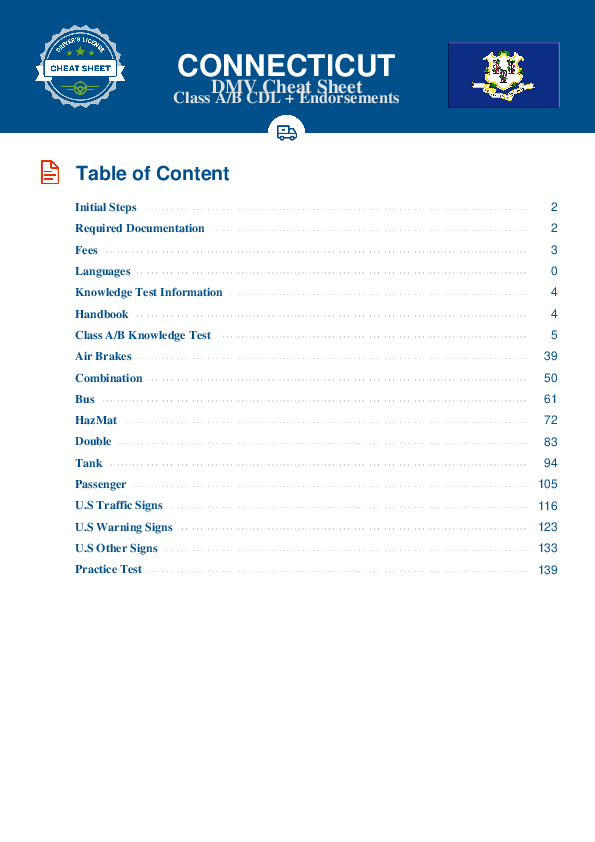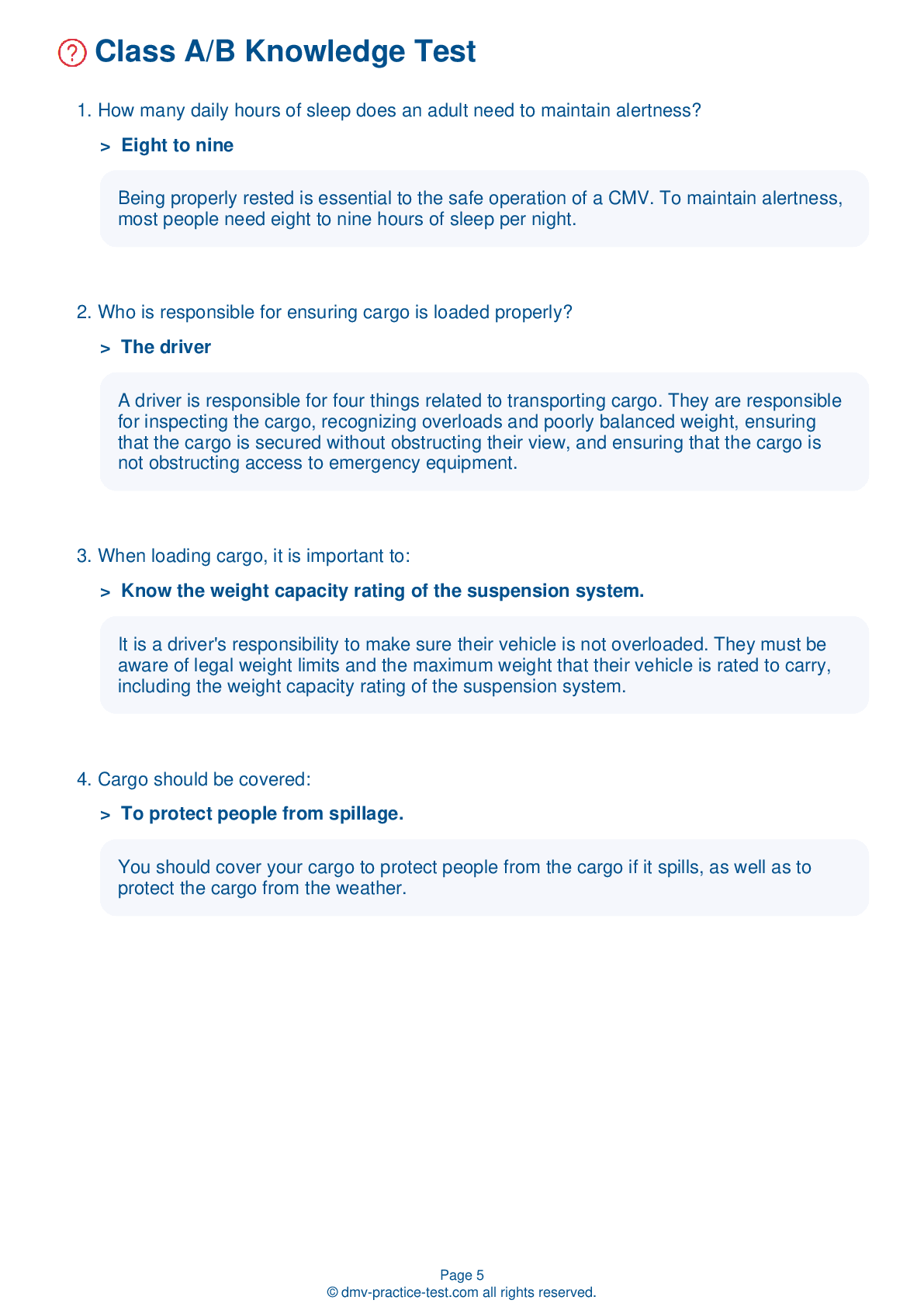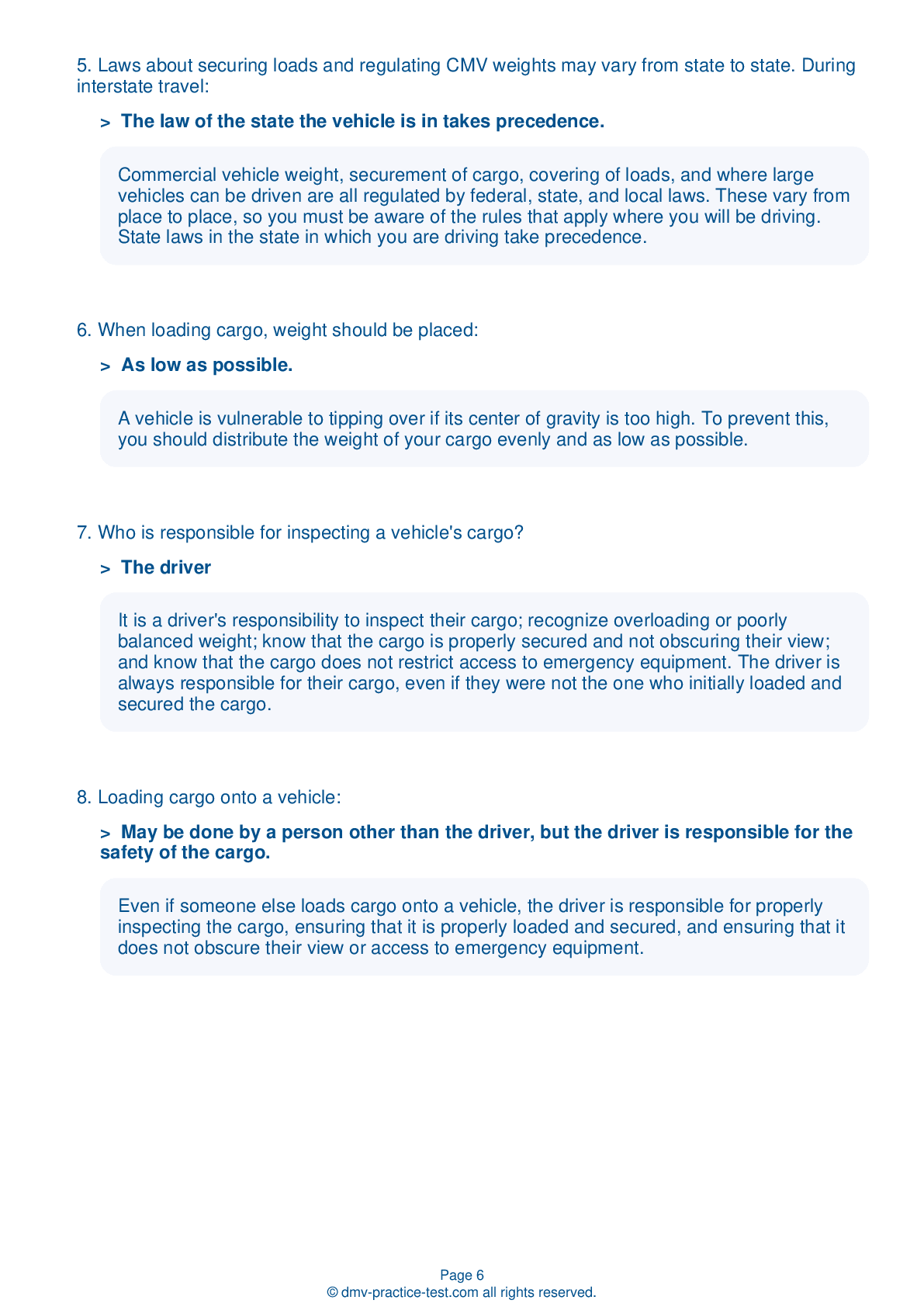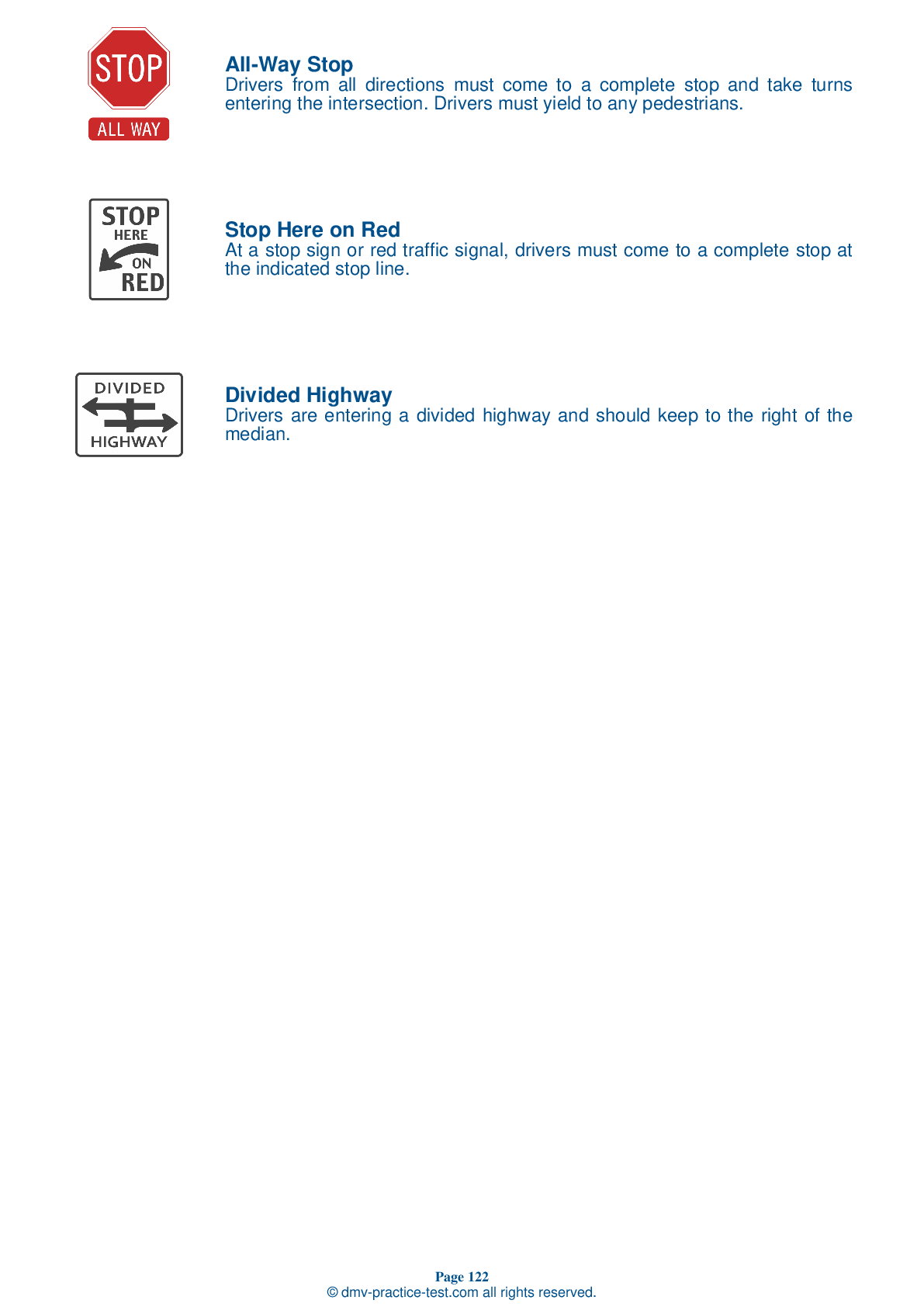Double Triple Test | Connecticut 2025 #2 Page 3 of 3
Train for FREE with our Connecticut CDL double triple practice test online. The official exam test consists of several obligatory parts, with all of them checking your knowledge of different blocks of road rules. If you need to obtain a CT CDL double triple license in 2025, practice as much as possible. Free sample tests published on our website will help you check and improve your knowledge and boost your grades. Please bear in mind that DMV requirements may vary from state to state.
15 . In a vehicle with dual air brakes, what happens if one system is low on pressure?
In a dual air brake system, if one of the air systems gets very low on pressure, either the front or rear brakes will not be operating fully. You should bring your vehicle to a safe stop and have the air system repaired.
16 . If another driver is following you too closely, you should do all of the following, except:
If you are being followed too closely, you should increase your following distance, avoid making quick moves, and avoid relying on tricks (such as flashing your lights) to help other drivers pass. Speeding up may only increase the danger by causing the tailgater to continue tailgating you at a higher speed.
17 . If hydraulic brakes fail, a driver can reduce their speed by:
If your hydraulic bakes fail, shifting into a lower gear can help slow your vehicle down.
18 . A distracted driver:
Distracted drivers perceive hazards on the road more slowly than drivers who are focused, or they do not perceive hazards at all.
19 . When glad hands are coupled, the seals should be pressed together at a ____ angle.
When coupling, be sure to couple the proper glad hands. When glad hands are connected, the seals should be pressed together at a 90-degree angle.
20 . What happens when a vehicle hydroplanes?
On a wet road, it is possible for a vehicle's tires to lose traction with the road surface and begin to glide along on the layer of water. This is referred to as hydroplaning. Hydroplaning can occur at speeds as low as 30 mph.
See the exact questions that will be on the 2025 Connecticut DMV exam.
99.2% of people who use the cheat sheet pass the FIRST TIME
Lillian MCcranie explains how our CDL study guide was helpful in passing the exam and recommends it to everyone.
Cameron tells us how he purchased the CDL exam, and found it to be a useful tool which helped him pass the exam and find a job.



